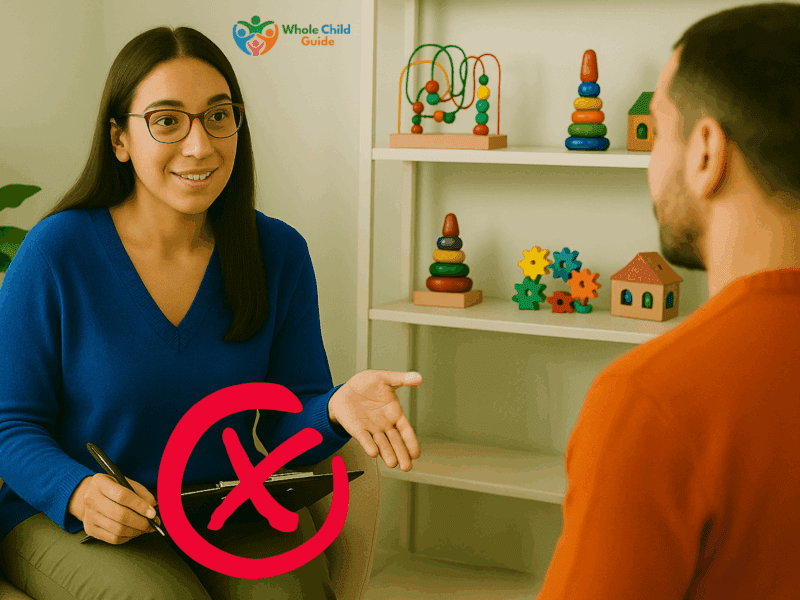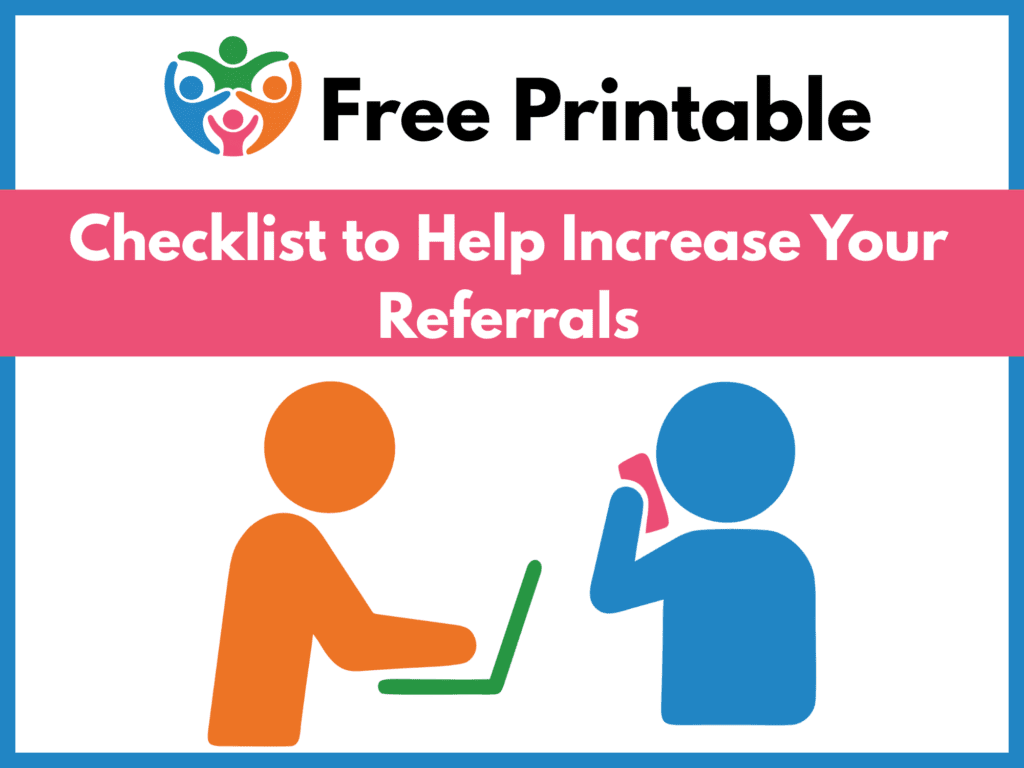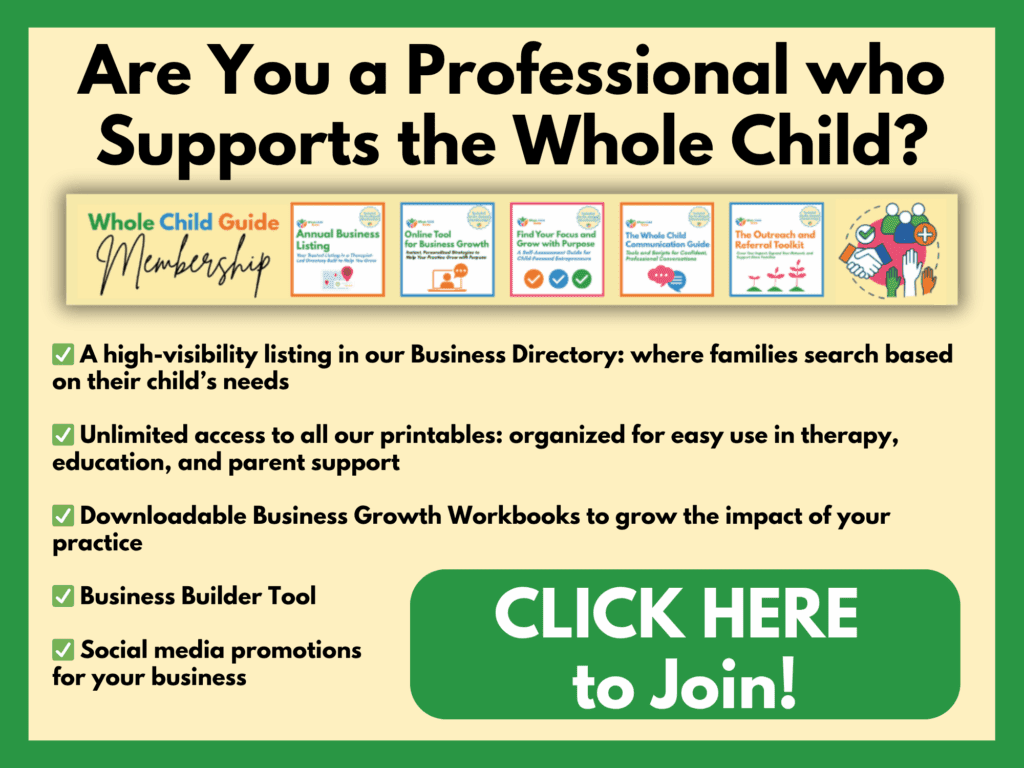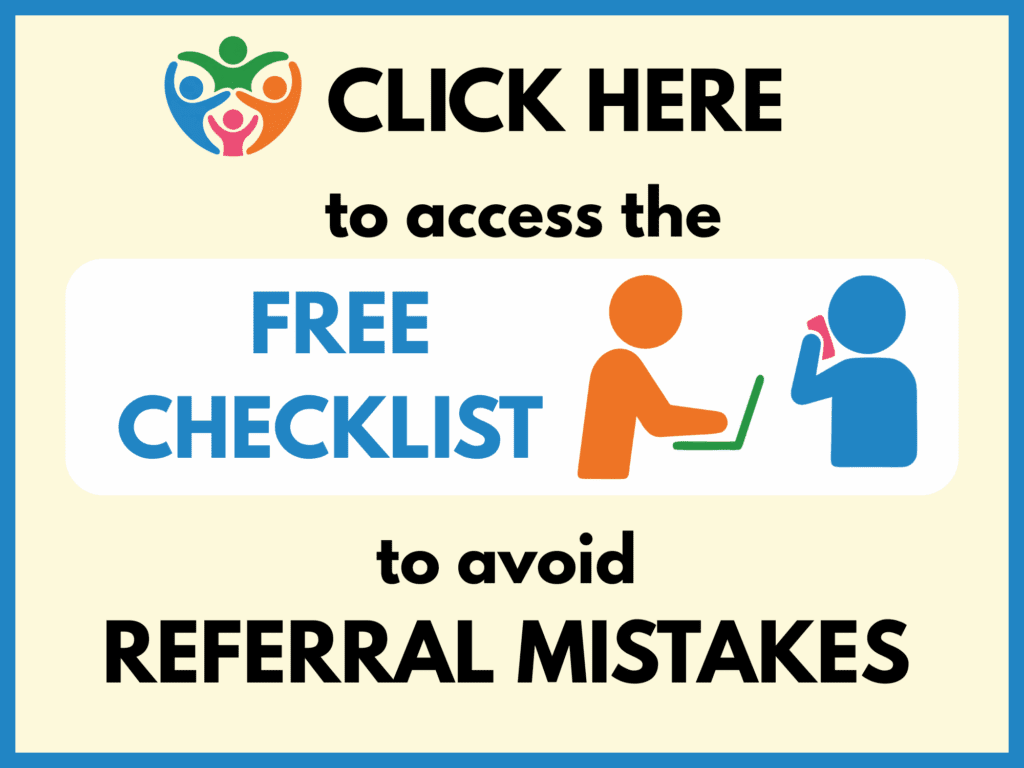
You’re ready to help children succeed but if referrals aren’t flowing in, it might not be your services. It could be your messaging. At Whole Child Guide, we’ve seen talented providers miss opportunities simply because their outreach is unclear or inconsistent. These common mistakes are easy to fix and once you do, you’ll be more visible and easier to refer to. The following tips come from our The Outreach and Referral Workbook, included in the Whole Child Guide Membership. When you are trying to get multidisciplinary referrals this FREE checklist can help you improve your referral results. Get access at the bottom of this post.
Mistake #1: Writing Emails That Are Too Long (Or Sound Like a Textbook)
Why This Doesn’t Work:
When an email is overly long or full of clinical language, it overwhelms the reader. Most professionals, especially teachers and doctors, don’t have time to read paragraphs or decode technical terms. You risk losing their attention within seconds.
❌ Example:
“With over 15 years of experience in pediatric neurodevelopmental interventions, I utilize sensory integration frameworks combined with DIR/Floortime and cognitive-behavioral strategies…”
✅ Try This Instead:
“I help kids who struggle with focus, sensory needs, and regulation succeed at school and home. I work with ages 3–12 in-home and virtually. Want a quick flyer?”
Why This Helps:
Concise, plain language shows respect for the reader’s time and makes it easy for them to understand who you help and how. A message that’s skim-friendly is more likely to be read and remembered.
Mistake #2: Being Vague About What You Actually Do
Why This Doesn’t Work:
If your message is too broad, people can’t tell who your services are for or when they should refer to you. Saying you “support children” is too open-ended—it doesn’t give your audience a clear idea of what you actually do.
❌ Example:
“I support children with a range of developmental needs.”
✅ Try This Instead:
“I support preschool and elementary students with motor delays, attention challenges, and emotional regulation issues. Sessions are held in schools or via telehealth.”
Why This Helps:
Specifics create clarity. You help your audience mentally match your services with the needs of real children they know. That mental match is what turns awareness into action.
Mistake #3: Following Up Too Much (or Not at All)
Why This Doesn’t Work:
Too many follow-ups feel like pressure and can lead to your messages being ignored. But sending one message and never following up at all isn’t effective either. People are busy and may need reminders—but they won’t respond well to pushiness.
❌ Example:
Sending multiple “Just checking in!” emails every few days—or never sending another message after the first contact.
✅ Try This Instead:
Send a polite follow-up after 1–2 weeks. After that, check in quarterly with helpful updates, service highlights, or relevant tips.
Why This Helps:
Gentle, consistent communication builds familiarity without being annoying. When the need for your services arises, your name is more likely to come to mind.
Mistake #4: Forgetting to Include Key Contact Information
Why This Doesn’t Work:
Even if someone wants to refer to you, they may not take the extra step to search for your contact info. Every barrier—no email, no link, no flyer—reduces the chance of a successful referral.
❌ Example:
“Let me know if you’d like more info!” (with no contact details included)
✅ Try This Instead:
Include your phone, email, website, and a flyer or referral link in every message.
Why This Helps:
You remove friction and make it easy for someone to refer you on the spot. When there’s no guesswork involved, your message becomes far more actionable.
Mistake #5: Making the Message About You—Not the Families You Help
Why This Doesn’t Work:
Listing degrees and credentials might seem impressive, but it doesn’t communicate how you help real people. Referrers want to know if you’re a good fit for the child or family in front of them—not just that you’re qualified.
❌ Example:
“I’m a certified XYZ therapist with advanced training in sensory processing, behavior intervention, and early childhood development.”
✅ Try This Instead:
“I help anxious kids build confidence and emotional tools so they can succeed at school, at home, and with their peers.”
Why This Helps:
This kind of message speaks to outcomes and real-life impact. It tells referrers exactly how families benefit from working with you—which is what they care most about.
Download your FREE Checklist to Support Better Referral Results
Get access to a three page worksheets to help solidify your referral results.



